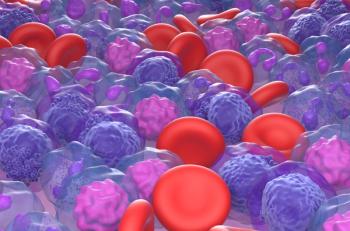
Treatment Adherence, Viral Suppression Suffer Due to HIV-Related Stigma in Florida
Stigma perpetuated in a health care setting has been linked to greater odds of poor outcomes in the HIV continuum of care for antiretroviral treatment adherence and reduced viral suppression among persons living with HIV in Florida.
Stigma perpetuated in a health care setting, compared with generalized stigmatization, has been linked to greater odds of poor outcomes in the
“We hypothesized that those with higher levels of general enacted and health care—specific HIV-related stigma would have poorer ART adherence and viral suppression after adjusting for potential factors associated with the continuum of care,” the authors wrote.
Of their 932-patient cohort—84.8% with complete adherence data and 96.4% with complete suppression outcome data—whose data were extracted from
Overall, 53.3% reported low/moderate or high levels of generalized HIV-related stigma and 10.5%, health care—specific HIV-related stigma.
Compared with study participants who reported no instances of HIV-related stigma, the odds of ART nonadherence did not differ significantly between those reporting a low/moderate level of stigma (adjusted odds ratio [AOR], 1.30; 95% CI, 0.87-1.95; P = .198) and a high level (AOR, 1.17; 95% CI, 0.65-2.11; P = .600). Nor did they vary much for viral suppression affected by both low/moderate (AOR, 0.92; 95% CI, 0.60-1.42; P = .702) and high (AOR, 1.16; 95% CI, 0.64-2.13; P = .622) levels of generalized stigmatization.
However, even experiencing at least 1 instance of health care—specific HIV-related stigma was shown to be strongly associated with both worse ART adherence (AOR, 2.29; 95% CI, 1.25-4.20; P = .008) and reduced viral suppression (AOR, 2.16; 95% CI, 1.19-3.92; P = .011). This includes patient avoidance, refusing to touch PLWH, and even service denial from a health care professional (ie, doctor, nurse, health care worker).
These odds were greatest among those aged 18 to 34 years and least for those at least 55 years old, in both the unadjusted and adjusted models:
- 18 to 34 years old: Unadjusted: OR, 2.12 (95% CI, 1.41-3.20; P < .001) Adjusted: 04, 2.49 (95% CI, 1.48-4.21; P < .001)
- At least 55 years old: Unadjusted: 0.44 (95% CI, 0.27-0.71; P < .001) Adjusted: 0.65 (95% CI, 0.35-1.20; P = .164)
“Although general enacted HIV-related stigma was not significantly associated with ART adherence and viral suppression, health care—specific HIV-related stigma was significantly associated with both ART nonadherence and nonsuppression,” the authors concluded. “There is a need to develop and evaluate interventions for health care workers who intend to reduce experience stigma among PLWH.”
They suggest, as a possible intervention, initiating statewide workshops that help to develop stigma reduction strategies. One example they highlighted was the
Limits to interpretation of their study results include that the respondents likely do not represent all PLWH in Florida, gender identity was not accounted for because so few respondents classified themselves as transgender or gender-nonconforming, and ART adherence was self-reported.
Reference
Algarin AB, Sheehan DM, Varas-Diaz N, et al. Health care-specific enacted HIV-related stigma’s association with antiretroviral therapy adherence and viral suppression among people living with HIV in Florida. AIDS Patient Care STDs. Published online July 6, 2020. doi: 10.1089/apc.2020.0031
Newsletter
Stay ahead of policy, cost, and value—subscribe to AJMC for expert insights at the intersection of clinical care and health economics.













































